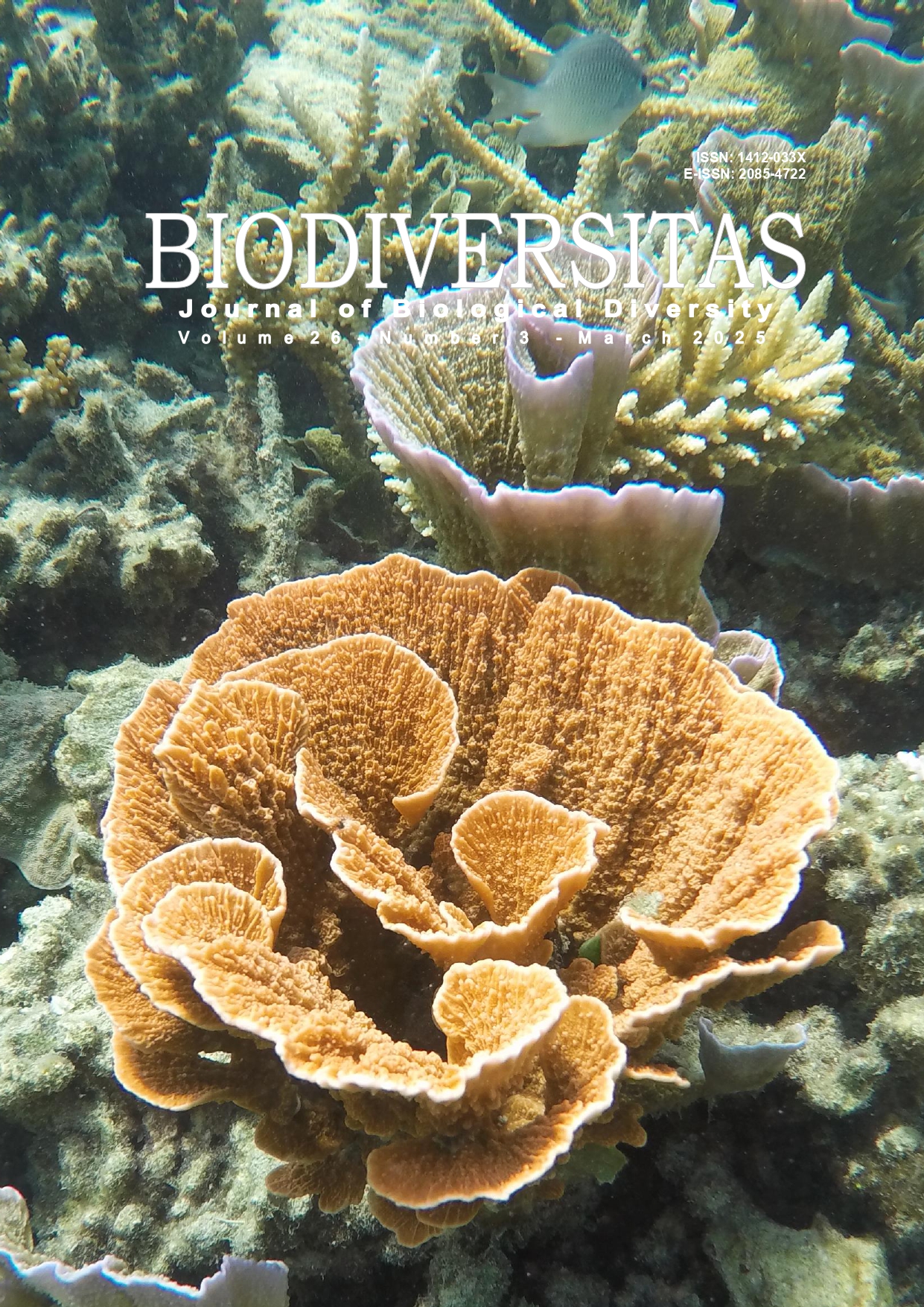Characterization of the genetic diversity of Chenopodium quinoa from the Department of Boyacá-Colombia using microsatellite markers
##plugins.themes.bootstrap3.article.main##
Abstract
Abstract. Manjarres-Hernández EH, Morillo-Coronado AC, Morillo-Coronado Y. 2025. Characterization of the genetic diversity of Chenopodium quinoa from the Department of Boyacá-Colombia using microsatellite markers. Biodiversitas 26: 1239-1246. Chenopodium quinoa is an Andean pseudocereal with excellent nutritional, pharmaceutical and industrial properties. In Colombia, this crop is considered marginal, and genetic studies are limited. The objective of this study was to characterize the genetic diversity present in 81 quinoa accessions from the Department of Boyacá using 13 microsatellite markers. Through the analysis of population structure, three populations developed, with an average expected heterozygosity of 0.472. The fixation indices in these three populations were less than 0.233, showing that there is no differentiation between the general population and the subpopulations. Analysis of molecular variance (AMOVA) showed that most of the genetic variation is found within populations (87%). The 13 microsatellites evaluated were highly informative, producing 42 alleles, which ranged from 2 to 4 per locus with an average of 3.051 alleles per locus. The microsatellites with the highest numbers of alleles were the KAAT037 and KGA03 loci (A=4,333). The values of expected heterozygosity (He) were lower than that observed (Ho), with an average of He=0.472. Both Fis and Fit confirmed a high number of heterozygotes compared to Hardy-Weinberg equilibrium conditions. Thus, microsatellite markers allowed genotypes to be differentiated according to morphological characteristics more than their origin. The findings of this study highlight the existence of significant genetic diversity in the quinoa accessions studied, which could be used in conservation and genetic improvement programs of this species.


 https://orcid.org/0000-0001-6221-8636
https://orcid.org/0000-0001-6221-8636